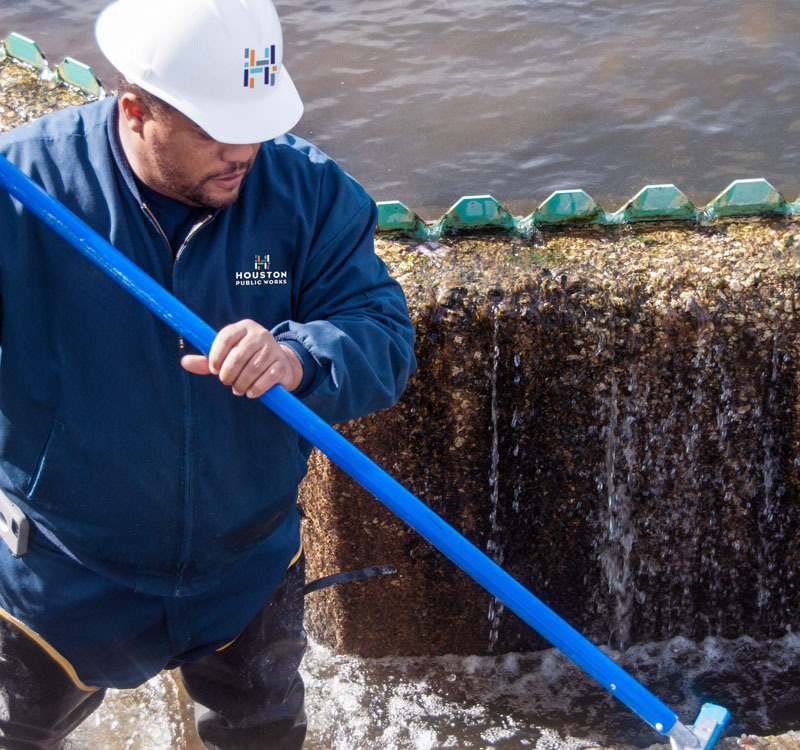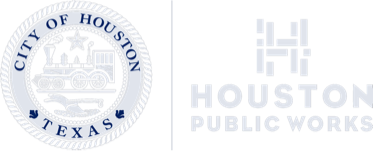

COMMITTED TO CONSTANT
IMPROVEMENT
Build Houston Forward (formerly ReBuild Houston) is the city's program to enhance, improve and maintain our streets and drainage systems without accruing additional debt.
Houston is a unique place with a unique set of needs to keep the city flowing, growing and moving. First, Houston's weather and soil structure make all our streets especially prone to potholes. Then add a Houston-sized number of large trucks hauling massive loads that also cause extra wear and tear on local roads. Finally, Houston is the only city of its size with no zoning. This makes planning drainage, especially during heavy storms, a challenge.
Houston has always been an innovative and resilient city, though, and no challenge is too big.
The purpose of Build Houston Forward is to handle those challenges efficiently, effectively, and without taking on the burden of new debt.
From daily repairs like fixing potholes, to necessary rehab to major reconstruction efforts, we remain in constant improvement mode, making sure our infrastructure is serving our community both today and tomorrow, as we continue to thrive.
This is how we Build Houston Forward.
THE PROGRAM'S HISTORY
A brief look at how we have evolved.

2010
In 2010, we had a petition for Renew Houston, then a proposition on the ballot which was approved by the voters. In 2011, an oversight committee was established.
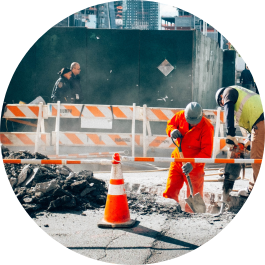
2012
The Pay-As-You-Go Program, an innovative and fiscally responsible formula for paying down past debt incurred by bonds for infrastructure projects, was implemented in 2012. That is when the city began collecting the drainage fee.

2013-2017
Over the next few years, several significant events underscored the importance of Build Houston Forward (ReBuild Houston): the Memorial Day and Halloween floods of 2015, the Tax Day storm in 2016, and then the devastation of Hurricane Harvey.

2018
In order to enhance transparency and ensure Houstonians were clear on the organization's purpose, new language was drafted for a Proposition put before voters, and it specifically stated that no funds from this effort could be used for anything but drainage.
THE PROGRAM'S HISTORY
A brief look at how this program has evolved.

2010
In 2010, we had a petition for Renew Houston, then a proposition on the ballot which was approved by the voters. In 2011, an oversight committee was established.

2012
The Pay-As-You-Go Program, an innovative and fiscally responsible formula for paying down past debt incurred by bonds for infrastructure projects, was implemented in 2012. That is when the city began collecting the drainage fee.

2013-
2017
Over the next few years, several significant events underscored the importance of Build Houston Forward (ReBuild Houston): the Memorial Day and Halloween floods of 2015, the Tax Day storm in 2016, and then the devastation of Hurricane Harvey.

2018
In order to enhance transparency and ensure Houstonians were clear on the organization's purpose, new language was drafted for a Proposition put before voters, and it specifically stated that no funds from this effort could be used for anything but drainage.
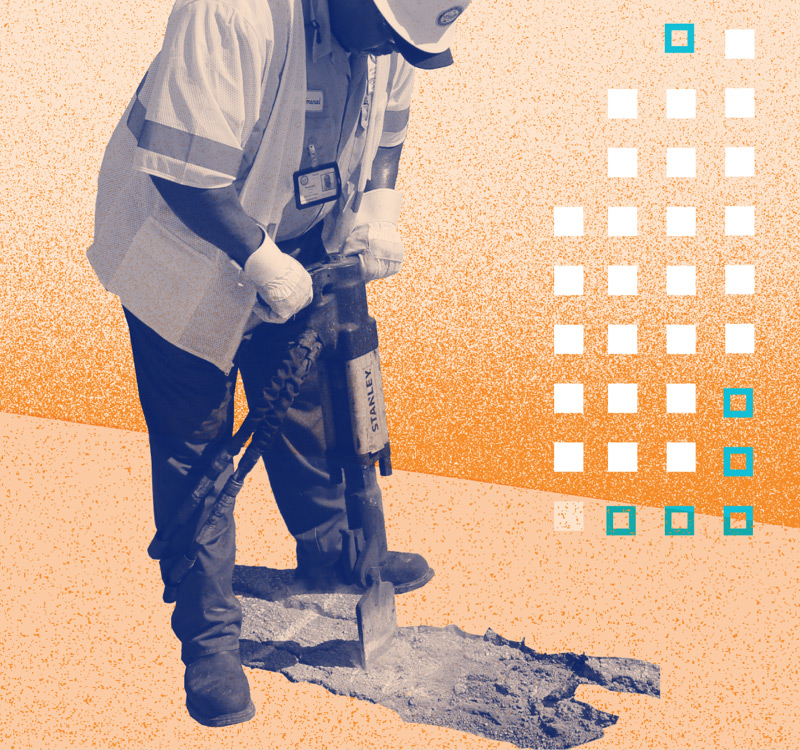
REPAIR
This type of work is considered our standard operations and maintenance, kind of like getting the oil changed on your car. It might include mowing and digging ditches, the repairing or replacing of manhole covers, cleaning and repairing storm lines, patching potholes, sweeping streets or similar work. Many if not most 3-1-1 calls requesting service involve this kind of maintenance.
REHABILITATE
Over time, wear and tear will take a toll on infrastructure that is in place. The Rehabilitation Projects are planned improvements to extend the life and effectiveness of existing infrastructure. This could include pavement overlays, panel replacements, upsizing inlets, replacing collapsed outfalls, re-establishing curbsides, as well as regrading ditches and minor erosion repairs.
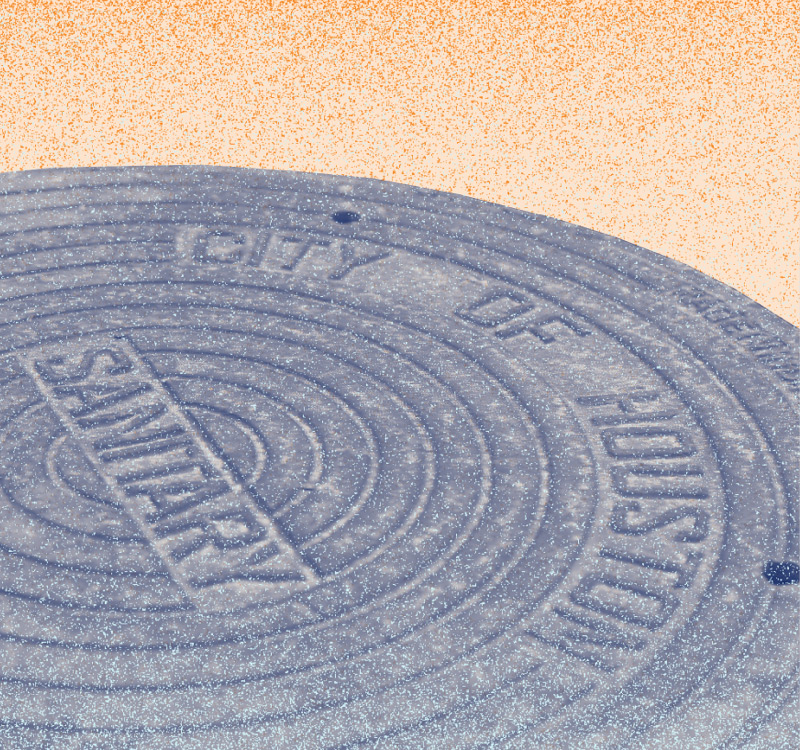
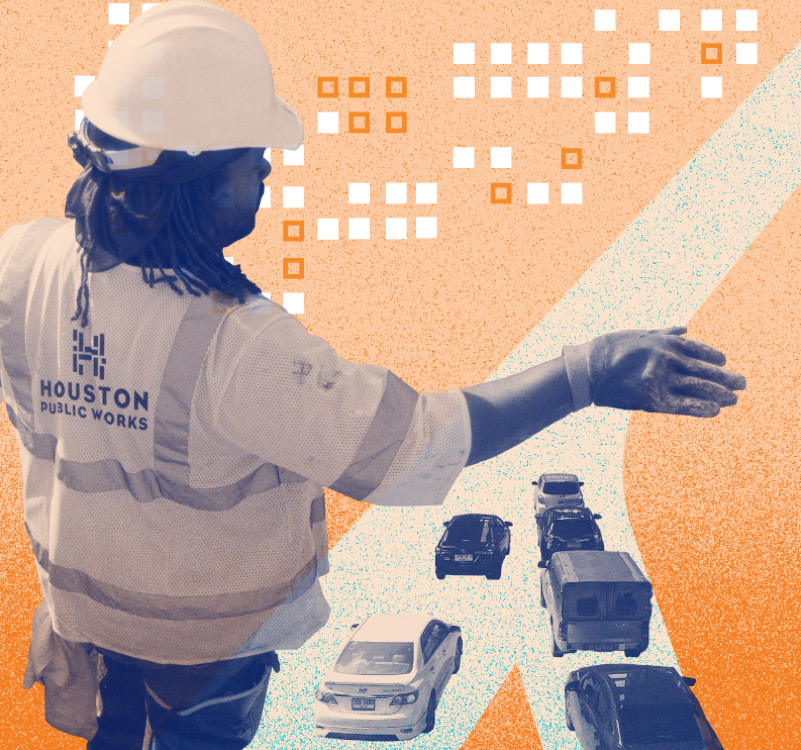
RECONSTRUCT
These projects are typically larger and more involved. Think storm sewer upgrades, neighborhood drainage expansion, significant street improvements, bridge replacements, etc. This also includes capital improvement projects or work funded via 380 agreements, where the city can provide a grant or loan to promote economic development.
PROJECTS IN
MORE DETAIL
Depending on what is required, two or even all three types of work — Repair, Rehabilitation and Reconstruction — could be going on in a given location. Under Find A Project you can see a breakdown of the efforts currently planned or underway. Each project has a page with more detail including scheduling, progress and estimated costs.

This funding comes primarily from two sources: Houston Metro and the Texas Department of Transportation (TxDOT).
A percentage of every dollar Metro earns goes into these repair, rehab and reconstruction jobs. A portion of the federal dollars from TxDOT projects are also earmarked for our street and drainage efforts.
PAY-AS-YOU-GO,
A NOVEL IDEA
For decades, the City issued debt to pay for street and drainage repair. Unfortunately, since road maintenance is ongoing, and new projects are needed all the time, that debt grew significantly. Rebuild Houston, now Build Houston Forward, has taken a different approach.
MONEY PAID,
MONEY OWED
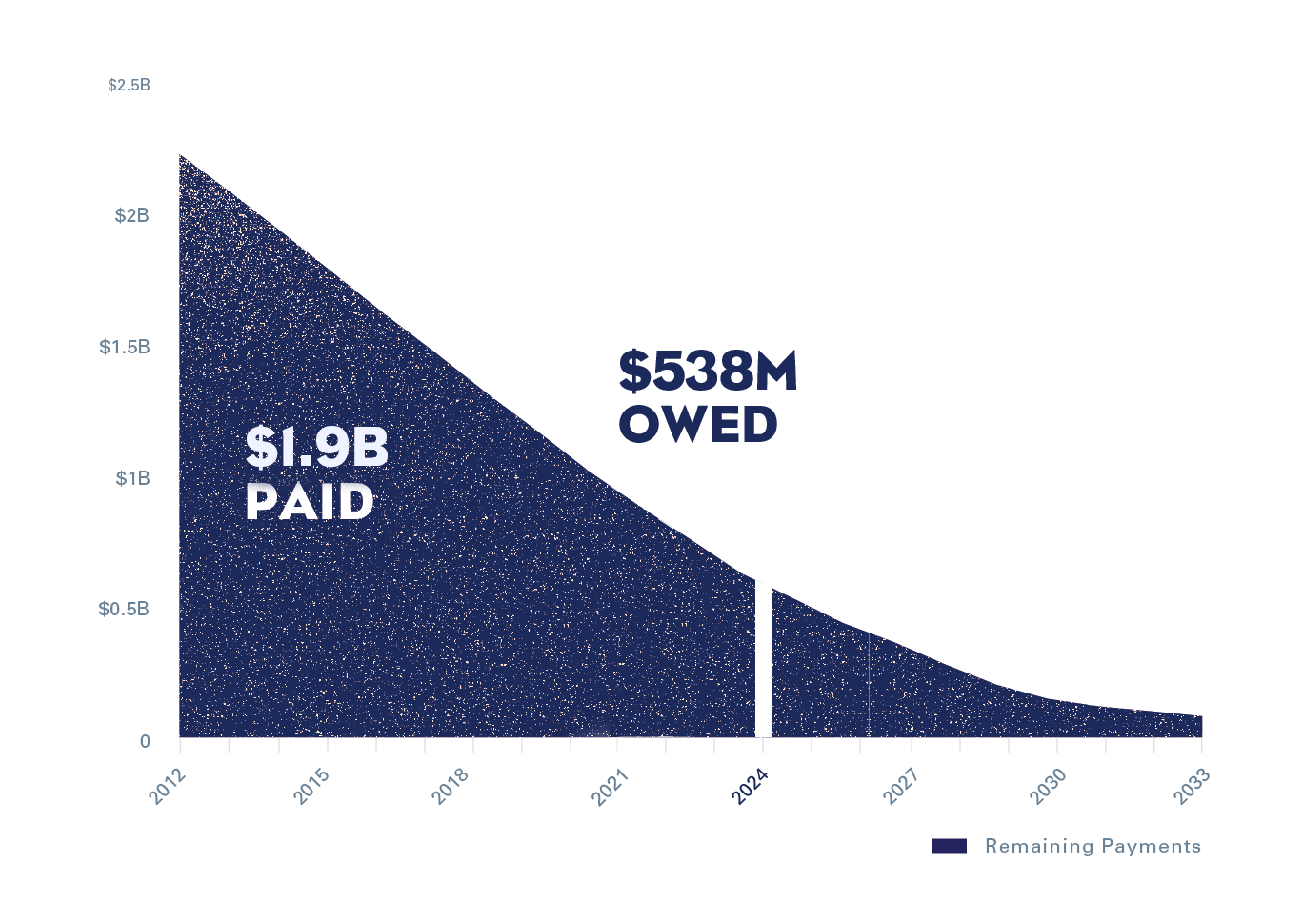
Since 2012, Rebuild Houston has
paid more than $1.9 billion toward debt
We're paying off old debt
One of the sources for our funding, the Ad Valorem taxes, have helped us eliminate the old debt. Thanks to Drainage Utility Ordinance No. 2011-254, Build Houston Forward receives an amount equivalent to 11.8 cents of every $100 of property value collected from property owners. This money is then allocated towards the debt accumulated from previous street and drainage projects.
It's working. Since 2012, Rebuild Houston has paid more than $1.9 billion toward past bond obligations for street and drainage projects. As of Fiscal Year 2024, the debt is reduced to $538 million, and our annual payment on that is nearly $135 million.
And still rebuilding
Once the collection of our approximately 11.8 cents per $100 surpasses our annual payment of $150 million, the remaining amount is allocated towards new street and drainage projects through Pay-As-You-Go funding.
As more debt is paid off, more projects will be funded with money we have. If we don't borrow, we don't incur interest, and the taxpayers get much more for every dollar.
AS DEBT DECREASES,
FUNDS AVAILABLE FOR
WORK INCREASE
LOOKING FORWARD
Forecasted funding through the next decade suggests a strong capacity to handle the expected work load including all repair, rehabilitation and reconstruction projects.
For a comprehensive look at the financial activity for this organization, since its inception in 2012, you can see the report here.
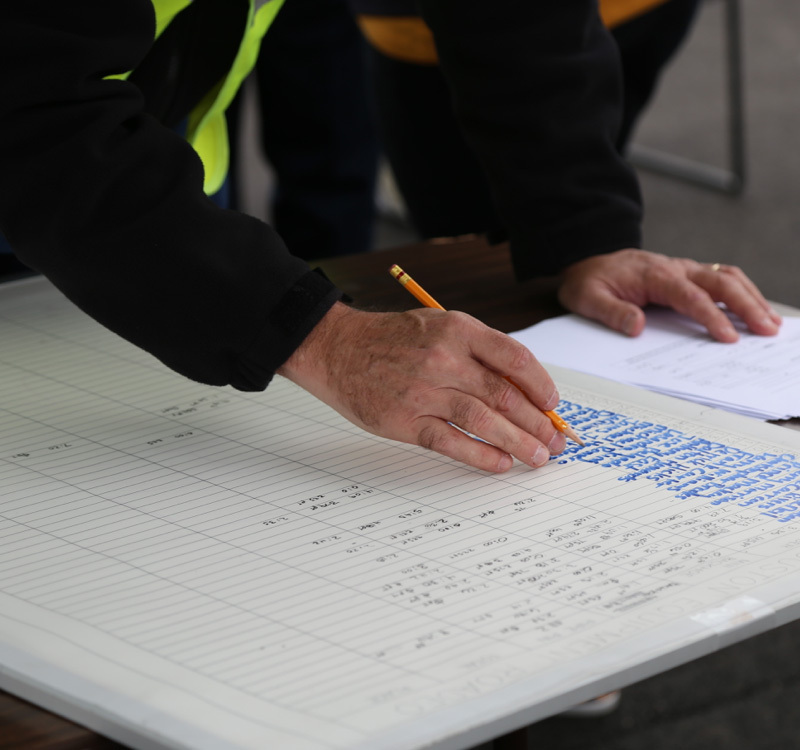
FAIR, LOGICAL FUNDING
The City of Houston has 16,000 miles of streets, more than 3,300 miles of storm sewers and some 2,500 miles of roadside ditches. Those numbers will only increase moving forward.
To supplement the funding that comes from Metro, TxDOT and ad valorem taxes, we established a drainage utility charge that will help provide for the long-term needed improvements and for the continued maintenance of the ever-expanding miles of vital Houston infrastructure.
DIRECTLY RELATED TO DRAINAGE
The charge is assessed to property owners, and it is based on the amount of hard areas, or impervious surfaces on one's property. If your property is developed, has structures and concrete surfaces that generate requirements for the drainage conveyance system, then you are assessed a charge between 2.6 and 3.2 cents per square foot of that hard area, per year. For a detailed breakdown of how the fees are calculated, visit our FAQs page.
